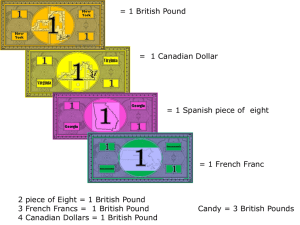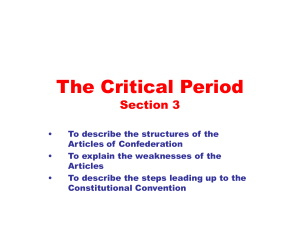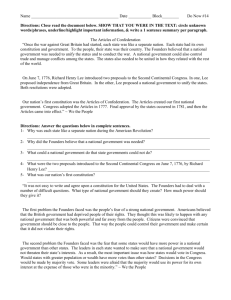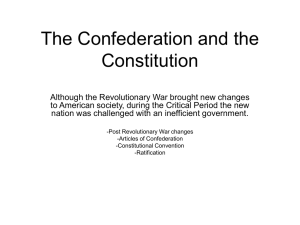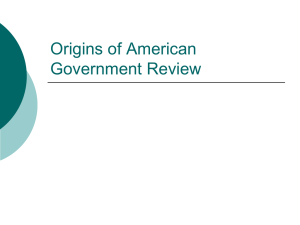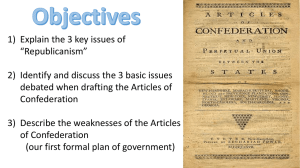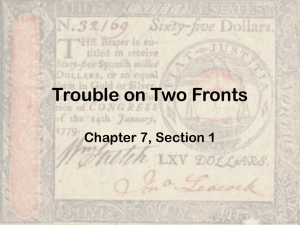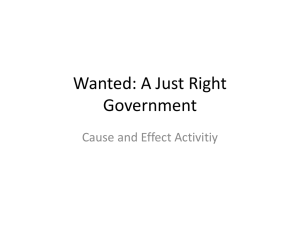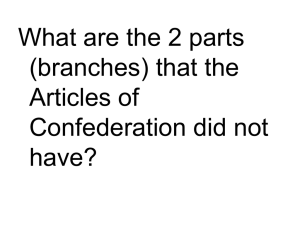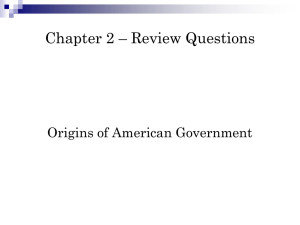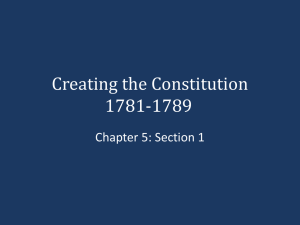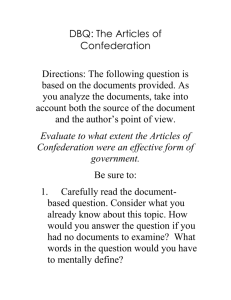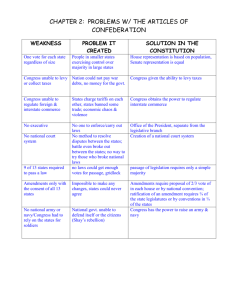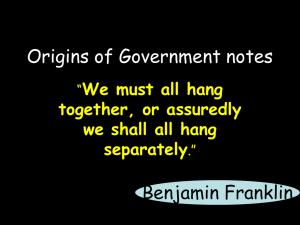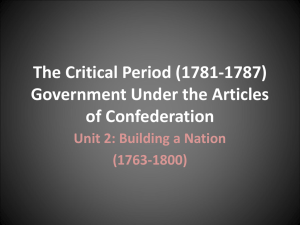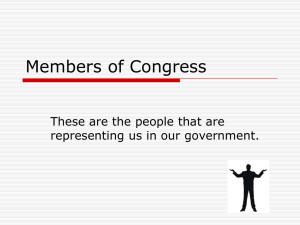PP_LP_Day_1_A_of_C
advertisement
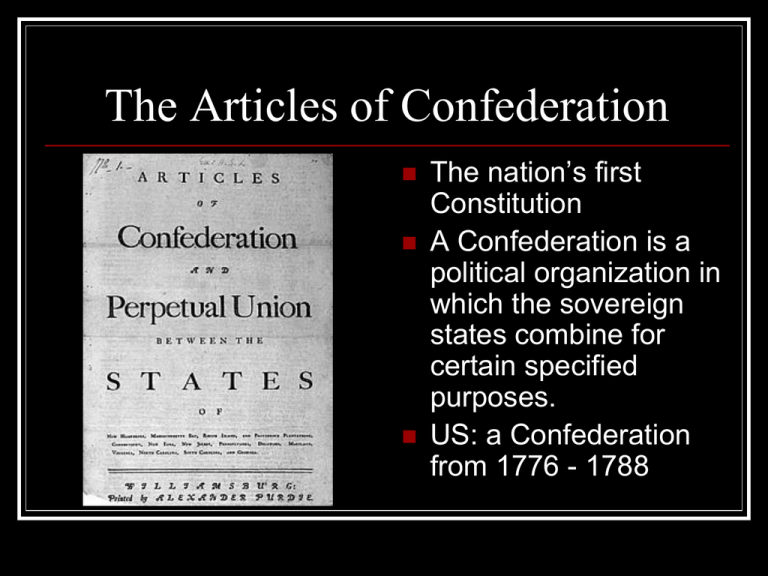
The Articles of Confederation The nation’s first Constitution A Confederation is a political organization in which the sovereign states combine for certain specified purposes. US: a Confederation from 1776 - 1788 1776 We’ve Declared our Independence, so now what? Although Independence from British Sovereignty had been declared, the former 13 colonies needed some form of government to wage war Each new state (13) created its own individual government States’ sovereignty was considered most important The Business of Rebellion June 7, 1776 Richard Henry Lee introduced resolutions to the Second Continental Congress 1 was for a declaration of independence; 2nd was the blueprint of a national government …..and this led to… Declaration of Independence Articles of Confederation Was this easy to create? NO!! Fear of creating an all-powerful national government that would trod on the states’ powers Fear that some states would be more powerful within this national government Problem #1- Fear of strong national government Once the Rev. War began, each state was like a separate nation Each with own constitution Each with unique government To the people, each state was their “country” Founders’ Concerns Agreed that a national government was needed Felt that the British government had deprived citizens of their right to be represented in government. Concerned that if a strong central government were formed, it would be too powerful and far away from the concerns of the people Control of government by the people Classical view of government Enlightenment Philosophy: belief that government is inherently evil and that people should be immediately involved in their own governance Republican government Could only succeed in small communities Successful only at local level between people of shared geographic interests Founders’ Solution to Problem #1 Create a weak national government The national government would be composed of the Confederation Congress (CC) No executive branch (today, the President) No judicial branch (court system, today, the Supreme Court) So who had the power to run the country? The STATES!! The State governments had absolute authority over their citizens Congress had no authority to collect taxes. It could request money from the states, but the states could refuse. Each state issued its own unique currency The states regulated all trade between themselves New York Colonial Currency Problem #2 – Fear that some states would dominate in the national government Each state was concerned with its interests Most concerned with each state’s vote in Congress Each state = 1 vote, or each state’s vote based on population or wealth Concern that if majority vote rules, that majority would act at the expense of the minority Founders’ Solution to Problem #2 Each state received 1 vote in Congress Congress could create laws, but 9 of the 13 states had to approve before going into effect Critical Thinking Group Question During the years of the Revolutionary War, the Articles of Confederation were more successful than after the war. What factors may have allowed for this?



